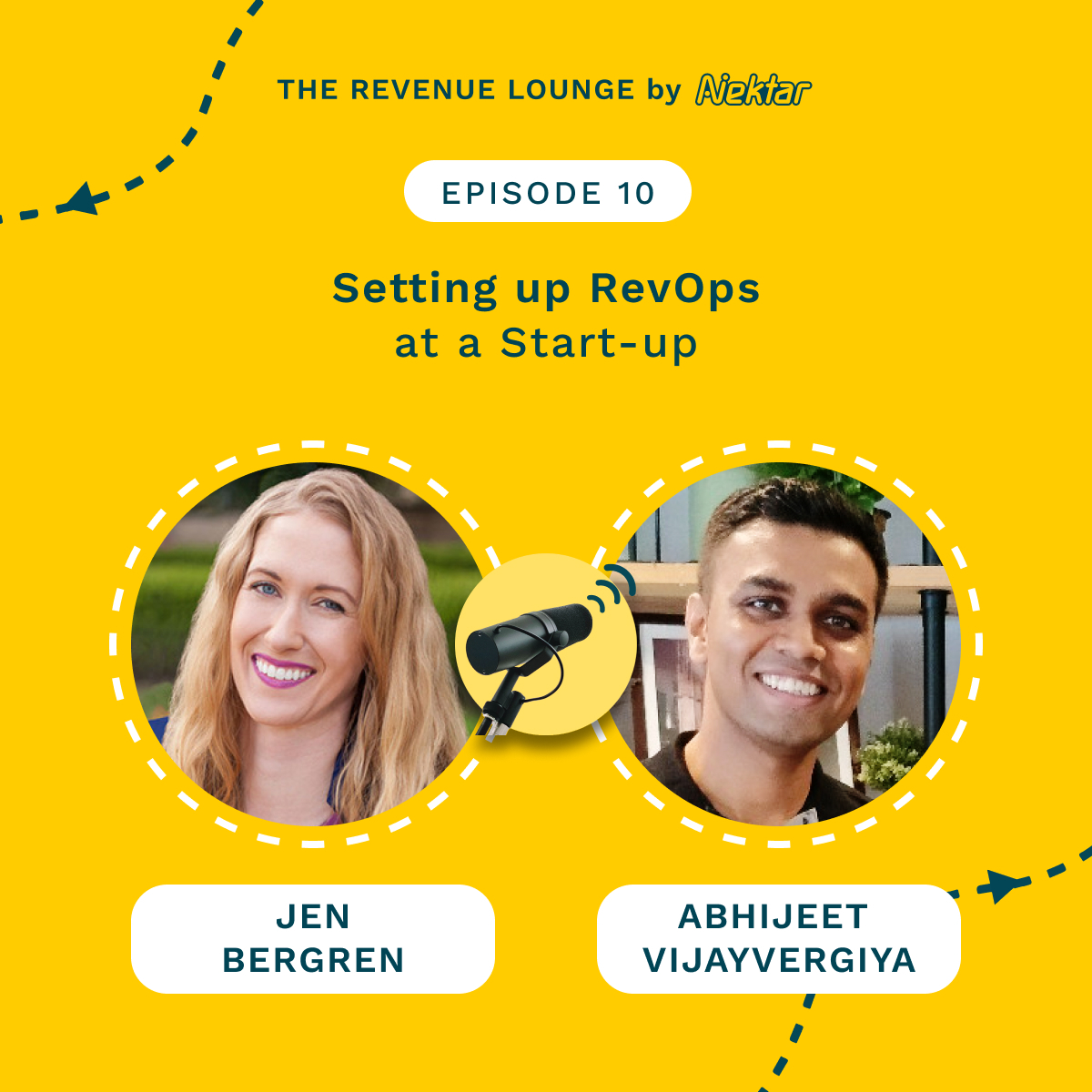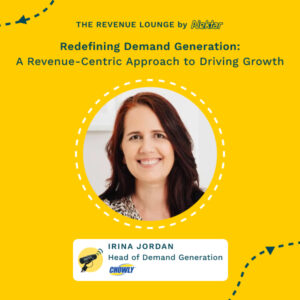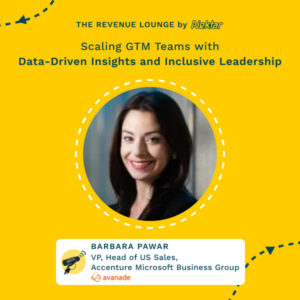Ep #12: Aligning Cross-Functional Teams to Deliver Excellent Customer Experience
November 30, 2022
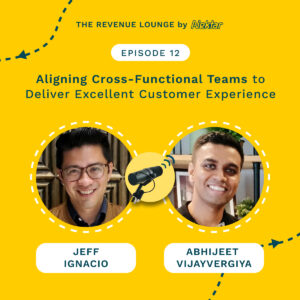
About
The Revenue Lounge
The podcast covers stories from leaders across RevOps, Sales, Customer Success, GTM, Data and Marketing about what drives these functions and what advice they would share with our listeners. With 3 seasons recorded, the podcast currently features 50+ enterprise leaders in the B2B SaaS domain. Tune in to hear from the best in the business
Driving revenue is no longer just the responsibility of sales. Revenue generation is like a relay – where sales, marketing, and customer success teams have to work towards common goals – and be completely aligned in this pursuit. Several advantages of this cross-functional alignment include improved customer experience, higher productivity among teams, better utilization of tech stack, and improved data usage.
But in reality, how aligned are these teams? Research says not so much.
Only 29% of business leaders, for instance, said that their teams are fully aligned toward achieving common revenue goals. Without alignment, a lot of opportunities to generate revenue are missed. The budgets, time, and effort of these teams get wasted, leading to revenue leakage across the customer journey.
The good news is that most companies are working towards creating this alignment by implementing a revenue operations function. In today’s episode, we will talk about the role of RevOps in driving this cross-functional alignment to provide a great customer experience and ultimately lead to higher revenues.
Jeff Ignacio joins us to answer some questions about how leaders can drive this movement within their companies. Jeff is the Head of Sales Operations at Forethought and a RevOps leader passionate about driving revenue excellence by working with sales, marketing, and customer success leaders.
Let’s hear it from Jeff!
Want to learn more about Nektar?
Talk to our team – https://bit.ly/3Vwfc8g

[00:00:00] Driving revenue is no longer just the responsibility of sales. Revenue generation is like a relay race where sales, marketing, and customer success teams have to work towards common goals, and they need to be completely aligned in this pursuit. Several advantages of this cross function alignment include improved customer experience, higher productivity amongst team, better utilization of tech.
[00:00:20] Data driven revenue management and many more things. But in reality, how aligned are these teams? The research says not so much. Only 29% of business leaders, for instance, said that their teams are fully aligned towards achieving common goals. Without alignment, a lot of opportunities to generate revenue are missed.
[00:00:40] The budgets, time and effort of these teams get lost leading to revenue leakage across the customer journey. The good news is that most of the c. Uh, working towards creating this alignment by implementing a revenue operations function. In today’s episode, we’ll talk about the role of revs in driving this cross function alignment to provide a great customer experience and [00:01:00] ultimately lead to higher revenues.
[00:01:02] Jeff Ignacio is joining us today to answer some of these questions about how leaders can drive this moment within their. Jeff is the head of sales operations at Fort Thought and a DevOps leader passionate about driving revenue excellence by working with sales, marketing and customer success leaders.
[00:01:16] Jeff, thank you so much for joining us today. How are you doing? Yeah, I’m doing well. It’s a great time. We’ve been coordinating this for a few weeks, so I’m, I’m extremely glad we’re able to get together here. Yeah, I’m stoked to have you on the show. I mean, we’ve been consuming a lot of content gems that you’ve been sharing on LinkedIn, so very excited to get you on the Revenue lounge.
[00:01:37] So let’s get this started. Jeff, we’d love to know a little bit about your current role and the company you’re working at, so maybe we can start with that. Sure. So I currently serve as the head of marketing and sales [email protected], where we believe the future of CX is human centered artificial intelligence.
[00:01:55] My role there spans the acquisition life cycle of a customer. So [00:02:00] working through our process, our enablement, our advisory, our insights and systems across both the marketing and the sales stack. It’s based outta San Francisco, and then I currently reside in Los Angeles. Awesome. Yeah. Did you move to LA during pandemic or you’ve been based there All the while.
[00:02:15] So I’m from here originally I was born in LA believe it or not, and then went to college here, university at UCLA. So some would say I’m a true Angelino. And then I went to business school at the University of Michigan, left LA cuz who doesn’t want to go to business school where the weather’s fantastic, like Michigan.
[00:02:33] And then I moved to San Francisco for a few years working in, you know, the large blue chip tech firms for a while. Then I’ve been at start-ups ever since for the last seven, eight. And I moved down to la, you know, met my wife, moved down here, and my family’s here. Her family’s here, and that’s why we’re here where we’re in la.
[00:02:49] But I was here before the pandemic move moved six years ago. Oh, alright. Pretty nice. So let’s unfold your Rev story. How did you get into Rev in the first place? [00:03:00] So just walk us through your story. Yeah, sure. Thanks. So there. Are three common pathways to, you know, go to market or revenue operations. And I’ll tell you how I got into there from one of those veins.
[00:03:11] The first is you either come from a technical background, you’re actually very strong at configuring systems or designing and even coding certain systems. So you might come from like a systems administration background of some sort. The second background is from an analytics or a finance role. So you know, you’re deep in the numbers, you’re actually engaged with planning exercises.
[00:03:31] You’re doing all sorts of analysis, like segmentation, industry win rates, things like that. And then the third is you’ve come from a go to market role. You’ve been in SDR, you’ve been in sales, or you’re in marketing. Join the dark side, or I like to call it the light side, but you know, my role, um, I was in sales before business school management, consulting and sales.
[00:03:50] Then, you know, took a two year break to reconfigure my career. Went into FP&A at Intel and at Google. There. At Google, I supported the sales organization, so I focused on annual planning. I’d focused on segmentation, quote a. Commissions calculations across 700 sales reps globally. That was always a fun thing that we did quarterly.
[00:04:09] And so I, I really enjoyed working with the sales organization just cause I had that background as well. But I wanted to get closer to the, the organization itself. Working in finance, you sort of plan along the way and you plan up front, but when you’re in operations, you actually get to be in the business yourself.
[00:04:25] And so I took an analytics role, met a company called Melt. There at one of the FP&Apartners, I built out all of their churn reporting, all their metrics and tableau. I got my feet wet into the world of like sales technology, but through business intelligence, I was fortunate enough to move into a company called Viser.
[00:04:42] They’re now a unicorn out of Vancouver. They’re focused on hr, um, enterprise analytics. I was hired as their director of sales operations. It was a title, a fancy title, and name only, like director of sales ops. I had no one that I managed, but I managed a bunch of systems and process. And when I came in, they tasked me [00:05:00] with helping run the rhythm of the business.
[00:05:01] So forecast reviews, pipeline calls, taking a look at our win rates sales cycle. So I, I was strong at that front, but I was very weak and had little to no knowledge in CRM or any of the other, like sales tech. And so to get up to speed, I’d have to learn the tools in my late night hours. And so I learned Salesforce administration.
[00:05:19] Learned Marketo. I already knew Tableau, but I didn’t know any of the sales tech stuff, so I had to learn all that from, from scratch. We implemented exactly, which was a commissions platform at the time, and so I had to learn the hard way. I had a startup, I was a team of one. I like to preach that team of ones have the most difficult job and all of startup plan. But ever since then, my skill set has grown. I’ve learned to lead people, and that’s how I fell into operations.
Yeah, lovely. I mean, great background. So looks like you are a pathway into Rev, so largely from business analytics side. That’s right. Or fp n a. That’s right. Yeah. So you did mention, uh, rhythm of the Business that really stuck with me.
So if you can just elaborate on that. How is RevOps able to measure the rhythm of the business and what’s the value that it can deliver. And what it means.
Yeah, so I think one of the understated aspects of a revenue operator is that, you know, you are in fact helping run the business, right?
[00:06:18] Certain folks can take a backseat when they’re in a revenue operations role, but in reality, you’re actually helping your CRO or your head of sales run that business. And one of the ways that you can run the business is creating these operating cadences or these operating rhythms. So for example, um, an operating cadence would have four different types.
[00:06:34] There’s the regular rhythm of the business, which focuses on, um, standing meetings. Um, it doesn’t have to be meaning, it could be in email, but you know, they focus on communication, engagement. What are the objectives of the business, how we’re doing, and checking on the status of that. The second is a planning cadence.
[00:06:51] So this is your annual planning or your quarterly planning and your, you’re taking a look at how to construct the business, so what programs, what head count capacity, roles and [00:07:00] responsibilities, and then how you might reconfigure your entire organization to meet the future needs of the business. The third is like your communication engagement cadences, and then the last one is gonna be something that I call interlocking cadences.
[00:07:12] This is where you’re able to build bridges across different layers of the organization. Cuz often what happens is information will flow between executives, right? So you have your, you have your head of marketing and you have your head of sales. They’re both in the executive committee and they’re speaking to one another all the time.
[00:07:28] But there’s. Downstream and upstream impact or meaningful pieces of work that need to move faster than that. And so you want to build these bridges, um, across these organizations. So one interlocking cadence would be, um, a marketing ops, the sales ops interface, and you’re focused on, you know, what are the big rocks that you’re working on?
[00:07:48] And here are the design choices and the trade-offs that we’re thinking of making. What could that impact upstream or downstream? A second one would be building what I call a go to market lunch readiness framework. So what you normally have is product and marketing as one part of the wheel, and then you have finance and sales as the second part of the.
[00:08:05] The first wheel turns as such where a product starts to develop, uh, a thesis and a series of products or features that are going to solve certain, um, pain points in the market. Then second, marketing is gonna take care of the product, the positioning and the placement of how they’re going to go out and.
[00:08:23] And position themselves with the specific set of features. Might be a minor release, it might be a major release. Then secondly, it’s about where does sales define the roles and responsibilities? Is every single sales rep going to go out with the messaging or are you gonna go on a limited release and try to get design customers or a small set subset just to learn more?
[00:08:42] Is it ready for general availability, et cetera? And then finance is gonna have to help figure out how to re. And how to generate enough capacity for the sales team to meet their goals for these specific new releases. So an example of an interlock. There would be, um, a sales enablement leader meeting with product and marketing to understand what’s coming down the pipe in terms of new products or new services.
[00:09:03] And then how are we gonna position, and then who are we gonna target? So what are our ICPs, and then meaning the type of accounts that we wanna go after. Ideal customer profile. Then who are our personas? Who at those companies is gonna help us break in and get us into the account in the first place? So those are the type of interlocks that are extremely valuable to me, is getting all of the functions to work together as opposed to information flowing from bottom to top, top to top, back down, from top to bottom.
[00:09:28] It just flows across your organization more seamlessly. Yeah, no, that totally makes sense. And talking about alignment, right? So I think sales, marketing and customer success are extremely crucial from a GTM stand. So what is your take on how companies are doing in terms of aligning these three functions and then broadly delivering exceptional customer experience?
[00:09:49] What do you think companies are doing with respect to achieving that goal? Do you think they’re getting it right? Or if not, what are the challenges typical companies face when they’re to align? These two functions? Uh, well, the good click bait answer would be to say, no one’s doing it right, and here’s my eight step process to go do it right.
[00:10:05] But I’m not gonna do that. I think the more appropriate thing to say is, every organization. Is trying to align their functions, but to varying degrees, um, you know, you’re not gonna bring your best every single day. But the way I think companies could succeed is if they have a series of tools at their disposal and processes that allow them for their sales team to work together.
[00:10:30] What are those tools? Uh, the first is a common goals framework. A lot of companies today are using OKRs, its objectives and key results. I believe Andy Grove was the first to implement that. Another framework that I think is, uh, valuable is v2, mom. It’s what Salesforce employs. So vision, values, methods, objectives, and, um, I forget what the last M for last M is for, but uh, you can look it up.
[00:10:54] The V2 mom, it’s a very memorable acronym. So once you have that goal framework, it allows everyone to realize, you know, what direction they need to row in. Now the question is how do you get everyone to row at the same speed, at the right cadence, the right rhythm? Um, that’s what the, the operating rhythms are for.
[00:11:08] Um, so for your sales team, you probably want to keep your account executives. The phones for no more than five hours. So how do you structure your meeting cadences to achieve that? So you might have like a weekly stand up that focuses on pipeline coverage and uh, updates. You might have an end of the week call.
[00:11:26] It focuses on forecasts where you’re going over current, current quarter forecasts, commit best case, however, whatever definitions you use, and then your next quarter coverage, right, which then bleeds into the pipeline meeting the following week. You might have a team meeting as well. So then those meeting cadences are the second tool that you’ll wanna use.
[00:11:43] The third is a common language. So data definitions, folks call it data dictionary, um, systems blueprints. These are all tools that allow you to speak a common language internally. So there’s nothing worse than talking about churn or ARR or new business and a [00:12:00] meeting, and then you. The people at the table that you’re, you know, supposed to partner with also have their own definition that greatly differs from your own.
[00:12:08] Um, and so you wanna have a common language that’s well defined and set up front. Um, the fourth tool is the interlocking cadences. We just talked about this, but this allows for free flowing of information and the early identification or risk and opportunity that allows your business partners to work well.
[00:12:24] So, Tools at your disposal that allow you to create exceptional alignment in the business. You ask the question about exceptional customer experience. I think customer experience is, has many touch points in their journey with us as an enterprise. The first is how do they become aware of you? What messaging are you using?
[00:12:42] What. How did you gain their track, their attention? What channels are you using? Did you use paid display, paid social? Are you events that I care about? So those are the type of interactions, and that helps build awareness. Then the second thing is when I’m evaluating and researching you, what information is out there?
[00:12:58] Can I go after, you know, G2, Capterra or software advice reviews? Can I speak to folks, to customers? Can I go into these communities that are out there, um, of my type and start to do a little bit of back channel research? The third is my engagement with your sales rep. Today we have a very variable. System with SDRs to sales, to implementation to cs, it just feels like you’re getting handed off.
[00:13:24] And so those handoffs need to be seamless, right? So how do you make that seamless? And that’s the evergreen challenge of a go to market. Then once you get into the sales motion itself, it’s um, what if I’m a buyer that doesn’t have like strong power and power is my ability to influence. Purchasing. Right?
[00:13:45] So power isn’t the necessarily the decision maker. It could be the person that says, no, the IT person has power. So as a buyer, how do you help me navigate? Is it an educational type sale where you have to teach me how to go get budget? You have to teach me how to navigate through a business case. Um, sometimes.
[00:14:03] You’re a category maker, right? So you’re selling a software that’s never truly existed. You’re not putting lipstick on a pig, you’re not renaming it. You’re actually creating something New. Buyers don’t know how to buy something new sometimes, so you have to help them. So that’s exceptional buying experience.
[00:14:18] Then once they’ve committed, signed contract and they’re ready to move on with you, how do they learn how to use your software or your tool or your service? So that engagement, that implement. And then, you know, I purchased the software or this tool or this physical asset because. I believed it was gonna solve a pain point for me, and I was going to receive some sort of ROI, some sort of value in return.
[00:14:42] How do I know that I’m getting that value in return? So that’s where, you know, customer success or some sort of proactive outreach from your customer experience team is going to unlock that for the customer. And then how do you make sure that they’re loyal and their lifelong customers? How do you get those repeat purchases, those renewals?
[00:14:59] [00:15:00] How do you get them to upsell you and if they ever decide to leave their company? How do they spread the good word about your software tool, like their referrals, and then how do they become repeat purchases? That’s the circle of life, and I think about that flywheel of creating exceptional customer experience, but more importantly, how do you create a exceptional company experience for the folks that are working with you?
[00:15:21] Yeah, I think that’s an important point. You mentioned, while a lot of organizations focus on customers, but it’s also important to focus. The employee experience as well, we’re dealing with your customers, right? So if you take care of your employees, they take care of your customers, right? I mean, it’s a common saying.
[00:15:36] So it’s quite important to have that experience played out both ways. Getting back to the customer experience side, uh, what do you see as common challenges when it comes to improving this customer experience? You talked a lot about what can be done to create a delightful experience. When companies try to focus on this integrated customer experience across sales, marketing, and customer success, what, what are the most common [00:16:00] challenges you’ve seen?
[00:16:01] So, I mean, we talked about the customer experience earlier, right? But the most common challenges are gonna be one, you know, are you actively listening, right? So one, are you building processes? Uh, that allow you to listen to, are you creating systems that capture that information and transfer it and pass it off to the right folks that the next person you’re talking to isn’t rolling back.
[00:16:22] It’s not like a boulder that you’ve given them and you’re rolling down the hill again when you meet the next person. And then third is your enablement, right? Like, how do you just be a good human being as a CSM, as an AE, as an SDR, so that way you are handling. Your prospects and your customers with great care, meaning that they’re generally walking away with a positive experience, right?
[00:16:44] Like, wow, I can’t believe that you were asking all the right questions as if you know my business. You were an advisor to me. You were thoughtful enough to say this might not be a strong fit. You weren’t super pushy, or, Hey, you. We’re giving me all the right pieces of information that I [00:17:00] needed at the right time.
[00:17:01] And so that is one of the challenges of a go-to-market organization is finding a way to put yourself in the shoes of your prospect and then thinking backwards from, okay, how, how do I make that happen from a people process and technology perspective? Yeah, no, I think very true. If you’re to like go further with respect to mapping this customer journey and then the way these three functions interact with the customer, right?
[00:17:27] Sales, marketing, and customer success. I think that one of the underlying things is data, right? I mean there’s a lot of talking even that Dreamforce, this time Salesforce is talking about unified customer 360 and bunch of other things, right? So, uh, what do you think is important in improving this data quality when it comes to alignment?
[00:17:45] So there’s a couple of things that I think are gonna be important. The first is having a data governance framework. So a data governance framework takes a look at what are. Pieces of data that you need, what level of quality do you need them to be at, and what [00:18:00] interval should they be refreshed? And then four, where across the organization should that data be disseminated?
[00:18:05] So one of the most powerful things is to have all of your data systems in sync. So for example, classic setup would be a marketing automation platform tool like HubSpot, Marketo, or CRM. You might have a HubSpot CRM. You know Salesforce or Dynamics, but you want all these systems to interact in such a meaningful way that the data fields and the metadata all lines up between these fields and that they’re updating in the right place.
[00:18:27] That allows your organization to go into their systems no matter what role they’re in. See the same things and be able to speak from a common platform. The second is knowing what data points to capture. You can’t have data quality without knowing what data you need to capture. So for example, if you’re in the marketing team or the sales team you want, you might wanna know a couple of things.
[00:18:44] You wanna know if they’re ICP compliant. You wanna know if they’re persona compliant. You wanna know if they’ve had interactions with anybody on your team before. So you should know those data. Next is knowing where to get the data from and having a rigorous [00:19:00] process around it. So third party data sources.
[00:19:03] You might have a third party data vendor that enriches your platform on a continuous basis. Second, you’re gonna have seller generated data points that come in. So these are things that you capture via form or through a meeting or through email. Like how do you slip all that information into your crm?
[00:19:21] Organize it in a meaningful way and distil it. To the point where you can action on it. And then third is gonna be your marketing marketer or seller generated or CSM generated content. This usually comes in the form of next steps medic fields, if you’re using medic as an inspection framework. So these are ways to raise the bar on your data quality across all your systems, and thus online sales marketing at cs.
[00:19:44] Yeah, I think you hit the nail there, right? Identifying what’s your data governance framework? What data you, you need to capture in the first place? And then like, how do you get that data back into CRM? And I think a lot of it is like processing the unstructured data because the data that you mentioned and described with it, seller generated, marketing generated, a lot of it is unstructured, right?
[00:20:05] So how do you get that data into a structured, because CRMs, uh, only take structured data, right? Or, or you can make sense out of CRM data if it’s in the structured format. So I think that also becomes important, and that’s what I think DevOps can play a very interesting role in getting all of that organized.
[00:20:20] So moving from data to tech stack, right? If you talk about data flows between departments, you need to talk about Tech Stack. So if you can guide us quickly through how leaders can optimize their tech stack to enable this seamless data flow across. Cross-functional departments. Yep. So I think a lot of folks like to talk about specific tools, and I’m not gonna do that.
[00:20:39] I think let’s just walk away with the first principles, a way of thinking about your systems that I think is very valuable. The first is to define your, define your life cycle. So if you define your life cycle, You start with the basement, what you’re gonna do is have some sort of activity diagram. So if anyone’s familiar with unified market language and you’re creating a diagram, so [00:21:00] usually a series of boxes with arrows pointing to diamonds, which are conditional layers, you wanna have that activity diagram of how your life cycle is defined.
[00:21:07] So it might start off with, How do we capture leads? Leads might come in from events, live import data imports, web form capture on your about us page, your feed demo page that goes into your, your marketing platform. Then whatever your CRM is. But once you define that life cycle, you can then layer on a couple of views and these views are gonna be valuable.
[00:21:28] You wanna have a view that says who is responsible and who owns this step of the process, and that’s going to underlie and reveal what are those hand. And the handoffs are gonna be very valuable to make seamless, cuz we talked about an excellent customer experience earlier. The second is gonna be layering on the KPIs.
[00:21:47] So at each node of the activity diagram, what are those main KPIs? So for example, for an SDR, the ultimate result is going to be how many meetings are you setting that are qualified and accepted into the pipeline. [00:22:00] But before that, there’s a whole series of KPIs. Calls connect rate. How many people are you actually having a conversation with of those conversations?
[00:22:07] How many have resulted in a positive interaction? How many meetings were set from there? Then you can start doing slices of that, like what time did you call, et cetera, et cetera. You can find ways to optimize and tune that engine. Then the third layer that you wanna layer on the life cycle is going to be the system’s view.
[00:22:23] So, Uh, very standard. Uh, I think systems view would be to have a disaggregated stack. It would be something like WordPress or website, some sort of website tool that you have, you’re building. Maybe custom. Second is gonna be, you know, your forms. How are your forms gonna bring in the data, either directly to your CRM or to a marketing automation platform.
[00:22:44] If you have a marketing automation platform, do you enrich there or do you enrich post facto into the CRM instead? If. Marketing automation platform is, um, doubles as your CRM. You can just stay in one system, but if you have a sec CRM then you have a map, and then you have a CRM. Your CRMs then gonna manage your pipeline and you can do things like forecasting pipeline reviews, and you can, you know, Design territories.
[00:23:09] And then you have your, like, you know, your customer experience tool after that, which focuses on upsells, business reviews and renewals. But the way to create seamless systems is not necessarily to embrace a disaggregated tech stack or, or, or a centralized tech stack. It is to try to focus on reducing friction.
[00:23:25] And what do I mean by reducing friction? Where can you minimize hand? Where can you minimize information drop off? Where can you, min, where can you reduce clicks, reduce tabs that they have to click on and reduce systems that they have to interact with. So if you can find a way to you make it appear that you’ve done as much reduction as you can, then it gives a small win to your sales team and a huge amount of credibility to your ops team that they’re doing what’s right for the go to market org.
[00:23:53] Okay, and then, If you’re to like look at Revs as a function, right? How do you think Revs is position in [00:24:00] promoting this alignment and if companies have to start implementing revs from scratch? Where do you get started with to drive this alignment that you mentioned? So I think there’s a couple of interesting things that would be important to remember here.
[00:24:13] Um, rev isn’t defined uniformly across businesses. Revenue operations can either take the form of a centralized team. Let’s say for example, you are a smaller organization and you. A CRO who needs a right hand person to run the rhythm of the business, as well as the systems and the reporting that person brings the data to the table.
[00:24:33] It may very well be that that person is a, you know, head of revenue operations. The second alternative is, you know, you have like some sort of chief operating officer and you notice that there are all these folks in the company that have the word operations in their title. Well, doesn’t it make sense to move all those operations underneath the COO or maybe even the CFO, uh, just to have to be an unbiased advisor to the.
[00:24:55] But you know, you’ll find a lot of organizations, uh, fall under these last few structures, which I’ll outline. [00:25:00] The first is a decentralized function, so. Sales has sales, operations, marketing has marketing operations, CS operations. But you need someone to get all of them to run together. So imagine a three legged race where your legs are tied and they’re not communicating with one another.
[00:25:16] What’s gonna happen is someone is going to trip, and that’s the, that’s the. Folly of downstream and upstream impacts. The next layer of organization is a hybrid view. So in some aspects you have a centralized rev team, but you might have a dedicated commissions function, you might have a dedicated deal desk function, and those are what I call shared services that go across all the different functions or the business units.
[00:25:39] And so how, how do you drive alignment there? One, you need to. You know, what is the purpose of revenue operations? What has become, you know, exponentially better by having this function or format that you have? Centralized, decentralized hybrid. Next is, I think revenue operations does a very good job at its best when they promote alignment.
[00:25:59] So we talked about, okay, our framework would be too, mom. We talked about systems blueprints, data dictionaries. A common language. So those are things that are gonna be helpful in promoting alignment. Next is running the rhythm of the business. So being thoughtful around, you know, the meeting structures, the information flows within the company, and how do you make sure that you’re giving enough space and time to the organization to absorb that data, that insight.
[00:26:24] Those decisions drive towards specific outcomes and then inspect the business and then do it all over again. And lastly, it’s about creating those frictionless systems. So we talked about this earlier, but systems that minimize handoffs, reduce clicks, tab systems, just a simpler uniform. Set of platforms or one platform for the team to run, and I think it’s often understated, but the playbook, you know, what is your playbook?
[00:26:48] What is your operating playbook As a business, as a CEO, you know, you have your direct reports and you have your board meetings. These are governance and inspection mechanisms for the business to not only [00:27:00] review what’s happened, but to look ahead as well, and to strategize and plan. Why should that not happen at every other function across the business as.
[00:27:07] Yeah, I think that’s a big takeaway actually. I mean, if there is a board meeting equivalent that can happen in every function, I think that can like really add a lot of value. So again, I think when you look at board meetings, you basically are looking at a lot of data in that meeting. And when you’re running some of these initiatives that you mentioned at functional level, obviously you need a lot of data.
[00:27:26] So when you talk about this data and more so like unified data, we’ve been talking about cross function alignment. And if you look at customer, it’s like customer. To the brand relationship. It’s like one relationship customer doesn’t distinguish between different functions of our business, right? So the unified data becomes even more important across this customer journey.
[00:27:44] So what role do you think, uh, revs can play here in unlocking this unified data for the automation? So there’s a couple of things. We talked about a common language, common goals, right? So having unified data across allows you to know your, where your mile markers are, to know, you know, where do you stand along your journey, how are you progressing against those goals?
[00:28:05] So you need to have those clear definitions to have everyone on the same page. There’s nothing worse than going into a meeting and saying, I don’t trust that data. Or How do you define churn? What does that mean? Did you exclude. Did you exclude that? What were your filters? All you’re doing is just wasting time.
[00:28:21] You’re actually adding time to your decision making. And in a moment, like today, in 2022, when there’s a recession globally, there’s nothing worse than being indecisive or being decisive of being late to the party on when you made your decisions. So you need to have a ability to have a common language, common goals, clear definitions, and then lastly, raise the bar on your data quality.
[00:28:41] It’s not good. To have qual a poor quality in your data because garbage in, garbage out. Your decisions are gonna be a function of the clarity of your data, and one thing you’ll notice, the business will move. Off instinct or operate on gut because they don’t trust the data. And when they do that, more often than not you play, you flip the coin enough times.
[00:29:04] You may not get to, you may not get to good decisions. Because of that, you want to be able to guide the ship. Towards better decisions each and every time because you’re bringing data to the table. Yeah. And you in mentioned trust in data, and I heard you speak a lot about trust in operations as well, and there trust is the most crucial factor when it comes to people willing to work with each other.
[00:29:25] So can you share some insights on what this trust truly means and how it can be implemented into an organization’s culture? So I always think about revenue operations as the chief accountability officer because you’re helping to define goals for the business. You’re helping to. Align the KPIs that define whether you’re doing well on those goals or not, and you have a spectra of outcomes, the low range to the high range.
[00:29:52] Lastly, you’re also creating the rhythm, the rhythm of the business to inspect how you’re doing along the way. Second, you know, I [00:30:00] tell this to anyone who joins Revenue Operations, if you’re in your first 90 days, your first 30 days, Go after quick wins. Learn as much as you can about the business. Get high business acumen, and then in your off time, go learn, you know, B2B marketing, B2C marketing principles.
[00:30:13] Go read sales management and sales methodology books, um, because it just allows you to speak a language to your business partners. So build those quick wins. But more importantly, quick wins is the long term wins. Building a reputation of reliable, excellent execution. So you’re in a position. Folks come to you internally because you are a deliverer of outcomes.
[00:30:35] You are someone that can drive change or change agent. Not only do you change systems and processes, but you effectively communicate to the field what those changes mean to them and why they’re there. And then making sure that the team adopts those changes across your organization. So trust and operations means trust in building an excellent company.
[00:30:53] Very true. And I’m recalling one of your other posts as well, where you mentioned about not all fires are created. And you need to get to the source and skimming through the obvious or going for quick fixes can be harmful in the long run, or you to elaborate on what you meant there. And then how does like play a role in carrying this exercise of going to the root cause?
[00:31:14] Yeah, so I teach this in my revenue operate races course and one of the things that I talk about is, There are so many demands on you as an operator, and they come from all corners of the business. So anyone listening to this probably is probably experiencing this now. They get an email from an sdr, they get a slack from an ae, they got a text from their cro, and they’re all.
[00:31:35] They’re all important requests to them, maybe not to you and to the business, and so I teach the concept of one on a strategic layer, creating a weighted scorecard approach to intake projects from across the business, doing a discover interview. With the business stakeholder and understanding the importance of it, and then creating, uh, weighted dimensions for the project itself.
[00:31:57] And then understanding, you know, what is the estimated SLA or deliverability, how many hours and weeks will it take? And then what is your internal team capacity to meet the needs and what can you realistically fund? Meaning I’m going to take on this project, or I’m not going to. There’s a simple phrase, which is, if everything’s a priority, nothing is a priority, and so you need to be able to, you know, The marathon thoughtfully.
[00:32:20] You can’t be sprinting a marathon constantly. So what you need to do is figure a way to prioritize in that weighted scorecard approach, figuring out which project you should take on, which is a P zero priority. Just a non-negotiable. What’s a P one? It’s urgent and important. P two, not urgent, but important.
[00:32:36] P three, not urgent, not important. That’s a meaningless task. I wouldn’t take that on. And so when you’re prioritizing, you know when I mean fires, everything’s a fire to somebody else, right? So if you’re an ant and you see a, you see a lighter, you might think it’s the largest fire on the planet, but if you’re a giant, you won’t even notice it.
[00:32:54] So there, everyone’s different perspective is going to be different. Um, and so you wanna be able to. They’ll trust with your [00:33:00] partners by saying, I’ve got you, I’m going to take care of this, but ranked against my priorities. You know, this falls way down the priority list. I mean, you may find ways to communicate that more effectively, um, but your business partners at the end of the day will understand and they’ll have to look for alternatives that they can’t go to you necessarily.
[00:33:19] Or they may just descope and rescope it all together. Um, the second thing is, Once you have a prioritization, you need to be able to allocate your resources accordingly to appropriately fund and tackle these problems. And so as an organization, you define I can take on three or four, uh, large strategic projects per quarter, and that’s it.
[00:33:40] Trying to sign up for six or seven. You’re just fooling yourself. You’re lying to the organization that you can deliver. Maybe you could deliver if you had, um, serious resource augmentation. You brought on three agencies and four sales ops managers and marketing ops managers. But in reality, businesses operate in a world of constraints.
[00:33:55] And so you have to be thoughtful around how to move on to sufficient frontier [00:34:00] that this concept of efficient frontier. In finance, we have the same thing in operations. Yeah, so that’s super insightful, Jeff. So that brings us to the end of section one. So now moving on to the fun part on Rapid Fire. So let me get you the first one.
[00:34:15] Let’s talk about books. What’s the. Uh, uh, one book that you recently read and you really loved it. Uh, I recently read Amp It Up by Frank Sluman, former CEO of ServiceNow in Snowflake. He talks about the concept of amping it up. So when you say you could deliver something in three months, why not deliver it in one month?
[00:34:36] What prevents you from doing that? Um, Where are your standards today and how do you two x them? How do you raise the bar? And so this no nonsense approach to business allows you to raise the level of excellence over time. So for example, if you’re playing baseball and your average hitter’s hitting two 20, um, what can you do to move that up to two 30 next year?
[00:34:57] And then the 2 40, 2 50, uh, you just start doing these minute changes. Over shorter intervals and they compound two meaningful impacts for the business. I’m gonna check that book out. It’s just something that I need right now. . Yeah. Moving to the second question there. You mentioned so many of your experiences across different companies, um, and you got like a fair bit of an idea about Revs as a function across these companies.
[00:35:21] So if you had to point out your favorite part about working in Rev, what would that be? I think it’s being an agent of change, right? You have maximal leverage on the business. Um, as a go-to marketer, uh, go-to-market operations, rev, your changes actually mean quite a bit to the business. And so doing so well is, uh, becoming an agent of change.
[00:35:41] Um, without the rev, I personally think businesses are operating as agents of chaos, so we bring a lot of order to chaos. Yeah. RevOps is the agent of change. So let’s move to the least favorite part then. What’s the least favorite part of working in ops?
I think as a profession, we leave the appreciation and the recognition piece to other people, and I do think operations, uh, in aggregate, uh, can and should do a better job of shouting their wins.
[00:36:16] Without it, you’re leaving a profession. Folks who are highly qualified, but super ready for burnout. And that’s why I think there’s a whole new set of tools and software, uh, and agencies that are developing around how do we reduce that burden so that businesses can move farther faster. Without incurring significant burnouts.
[00:36:36] I mean, if you look at revenue operators today, specifically at like tech startups, their tenures don’t last very long. There’s like one or two years folks are leaving. One. There’s been an arms race and salary. I think salaries have inflated greatly over the years, but it’s also because they recognize the importance of the role.
[00:36:51] Um, but the second piece is that, um, folks just get burned out. You know, the under investment in Rev is real at companies. So you [00:37:00] get to a point where, Indispensable to the business, uh, and they can’t let you go. Uh, but yet they’re not rewarding you for that ability to be so indispensable. Um, I think that that’s a huge misfire for companies.
[00:37:12] Yeah. I mean, you’re right. A lot of times Rev becomes that unsung hero. So how do you get revs that seat at this strategy table? So, sorry, I’m debating here from the rapid fire, but this is an important question. What would you recommend to the folks out there who are listening to. What do they do to get a seat at the strategy table?
[00:37:31] One, you have to know the business. You have to have a high level of business acumen. Um, and that comes with understanding the business model that you’re employing. It understands with, um, your numbers, knowing those numbers inside and out. Um, being able to take a step back every day and try to find two or three bullets in the data that you can share as insight or you can share as a recommendation to the business.
[00:37:54] You have enough meaningful. Interactions with those, those bullets and highlights that it shapes the thinking of the people around you. And at that point, you are a person that identifies risk early. You are a person that identifies opportunity early and you come up with creative ideas for the business to execute them, uh, that are realistic and, um, that don’t have as many trade-offs to make.
[00:38:15] Um, at that point you become an. You head of sales, your sales manager, your head of sales or marketing, and at that point you will be invited to the table because you are an advisor to the business. Yeah, I think becoming that advisor to the business is the key there. So we have worked with like a lot of other Revs leaders.
[00:38:33] So if you’re to pick one, who’s your Revs role, role model? Who you look up to and why? Whew. I don’t really know. I think there’s been many people in my career that have shaped me. Um, I’ll say this. , any business leader who you. Has clear goals, a clear accountability framework, um, consistently hires the right people.
[00:38:58] Um, those are the [00:39:00] folks that I look up to the most because they are more often than not de-risk chance for failure. And those are the folks that I, I, I’ve, like in my career, I don’t wanna name names per se. I’ve just witnessed. They’ve just done an excellent job over and over and over. They have a consistent track record and they do so because they do all those things.
[00:39:15] Right. Yeah. And what’s the advice you’ve received from someone that has stayed with you, that’s something that you’d like to share with us? So when I first got into the sales operations, I had transitioned from a finance role. And um, you know, I was looking at the, I was looking at revenue operations purely from the.
[00:39:32] Right. Like I knew the stage win rates or win rates from certain stages. I knew the days and time sitting in stage. I knew the probabilities of an opportunity closed, losing or closed winning if it hit a certain amount of time in stage. But that made the business just a series of data points, a series of numbers.
[00:39:48] Um, but in reality, customer companies are built from people. Um, and one of the things, one of the lessons that, um, you know, my leader had imparted to me was that [00:40:00] Jeff, Gotta know the deals. You gotta listen to calls. Every once in a while. You should ask to go to a demo. You should, you should see what’s happening, um, to learn what’s happening, uh, when we’re going out.
[00:40:11] And that allows you to take not only to build a better quality of your customer experience, your prospecting experience, and then you can start redesigning through empathy, um, some of the processes, some of the data points you need to capture. Um, and that was something that I had missed when I, when my first stint, um, as a sales operator.
[00:40:28] I had simply was focused. Building processes, building data, uh, building reports and dashboards. Um, but I just didn’t know what was hitting the factory floor. Like how were our SDRs talking to our prospects? How are our sales reps managing deals and managing, buying committees? I had no way, uh, to really understand that.
[00:40:47] So at the end of the day, one of the big pieces of advice was you have to know. Not just the business, but you know, you have to know how we do business. Um, and that was something that I missed, uh, in my first stint as a, as a revenue operator. And what’s was the one piece of advice you would like to share with somebody who would like to have your job someday?
[00:41:04] What would that advice? Yeah. Never settle. That’s probably my number one thing. Um, you know, I think if you’re in revenue operations, you’ll realize this pretty quickly. You can never settle. Um, the demands of the role, uh, force you to always be in motion. I think this is a profession for people who constantly like to solve interesting problems.
[00:41:22] It never really ends. All you do is reach another level. It’s like a video game and you’re going through a, a new series of c. So it’s a lifelong profession of learning. So I’d say if um, if you’re in the role or you wanna break into it and that appeals to you, um, best of luck because uh, you’re gonna need it.
[00:41:38] Yeah. Brilliant. So Jeff, that was one of the most insightful episodes that we recorded. Thank you for being so generous with all the insights and sharing that with our audience. And yeah, it was lovely chatting with you today. Thanks for your time again, and wishing you all the luck.
Thanks Abhijeet. It was a pleasure. I really enjoyed our conversation.

Ep #1: Navigating the Downturn with a Hyperfocus on Productivity
Listen Now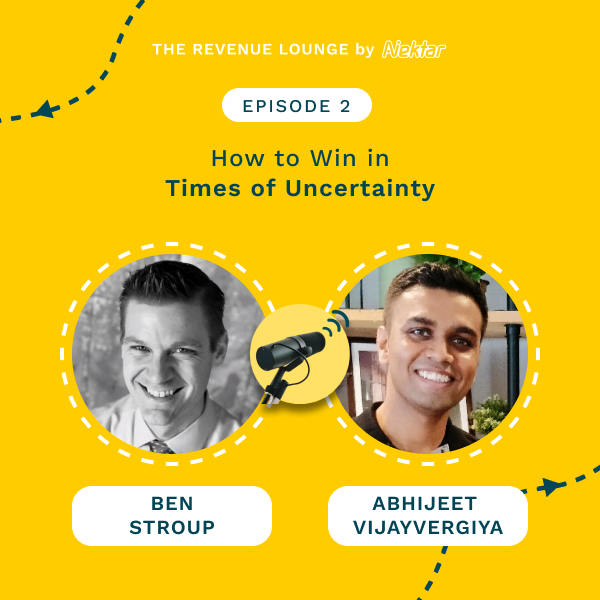
Ep #2: How to Win in Times of Uncertainty
Listen Now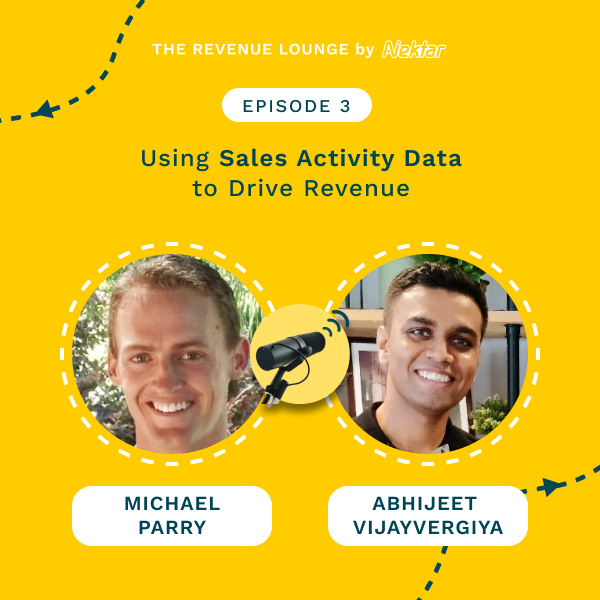
Ep #3: Using Activity Data to Drive Sales Productivity
Listen Now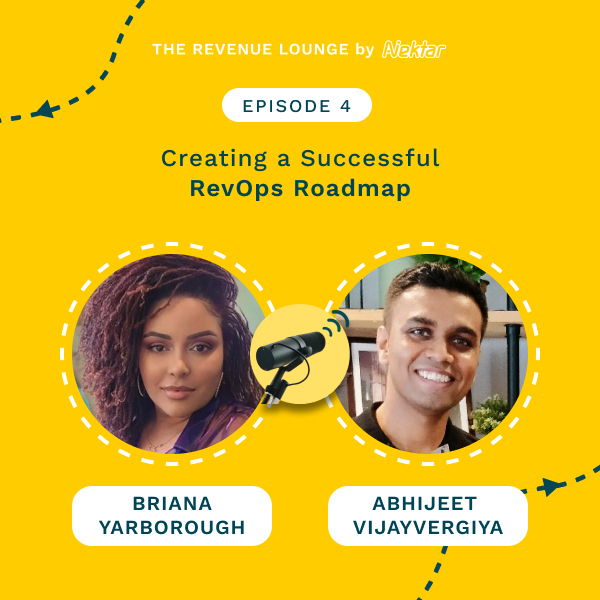
Ep #4: Creating a Successful RevOps Roadmap
Listen Now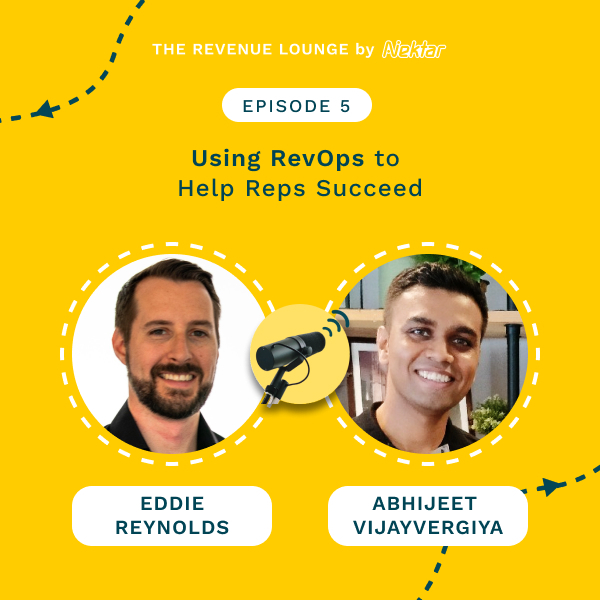
Ep #5: Using RevOps to Help Reps Succeed
Listen Now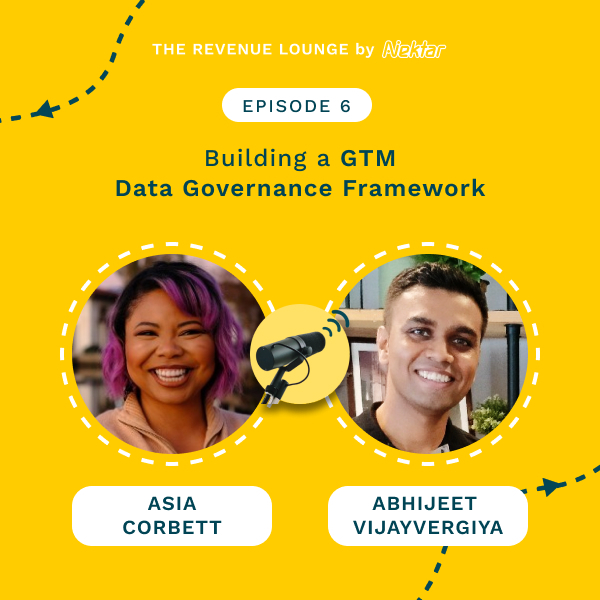
Ep #6: Building a GTM Data Governance Framework
Listen Now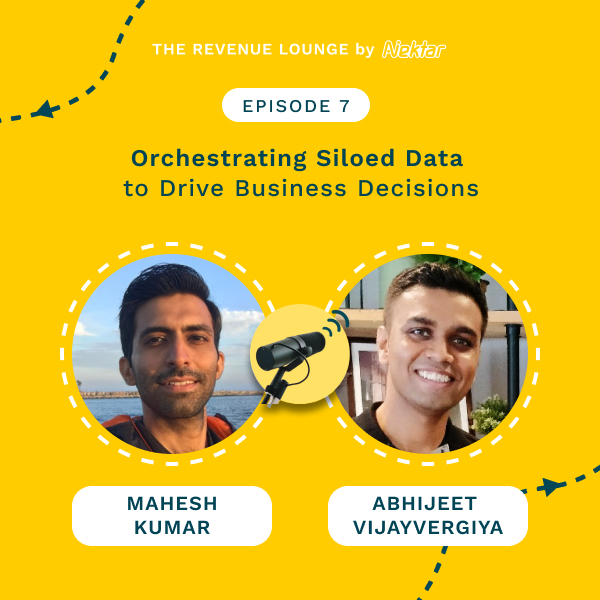
Ep #7: Orchestrating Siloed Data to Drive Business Decisions
Listen Now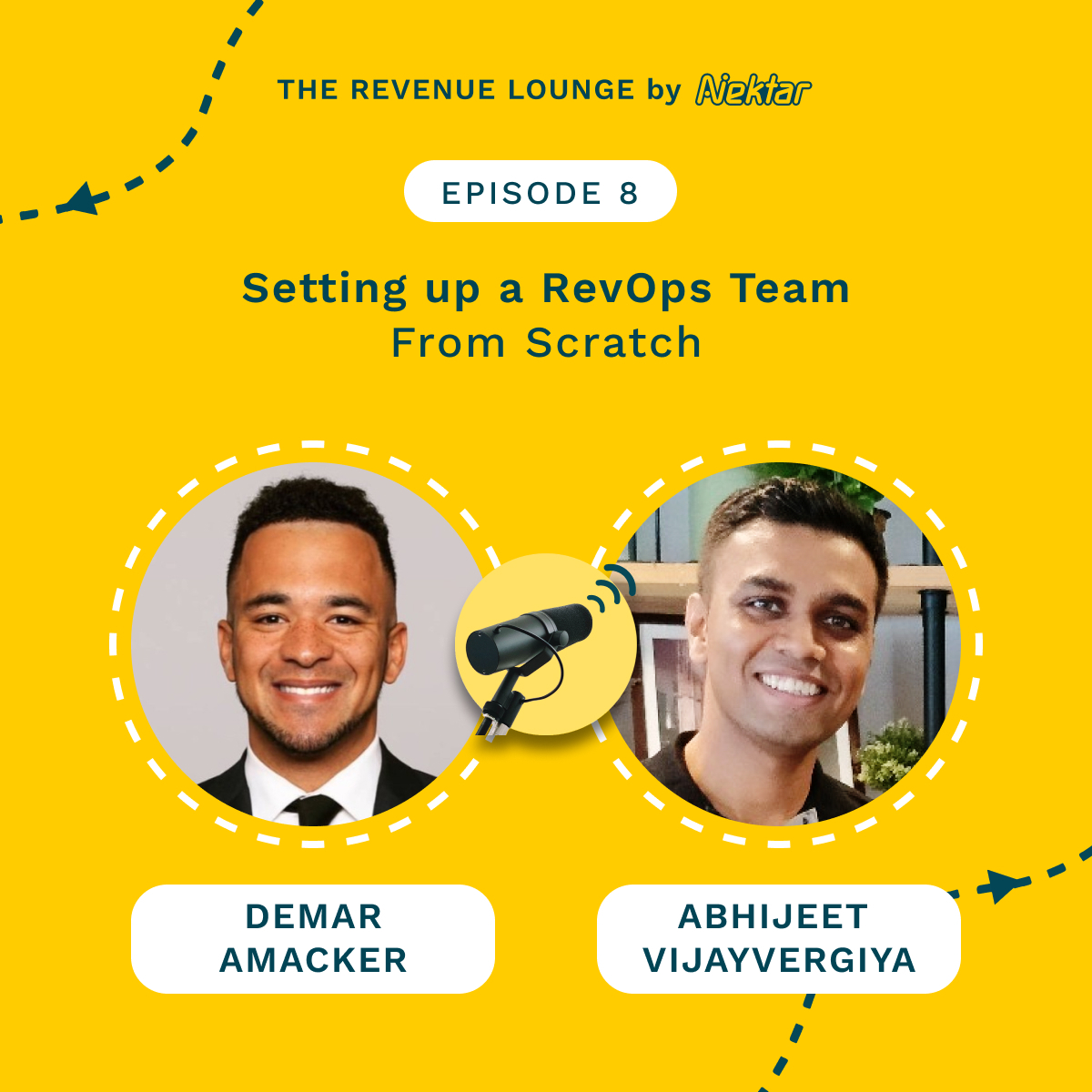
Ep #8: Setting Up a RevOps Team From Scratch
Listen Now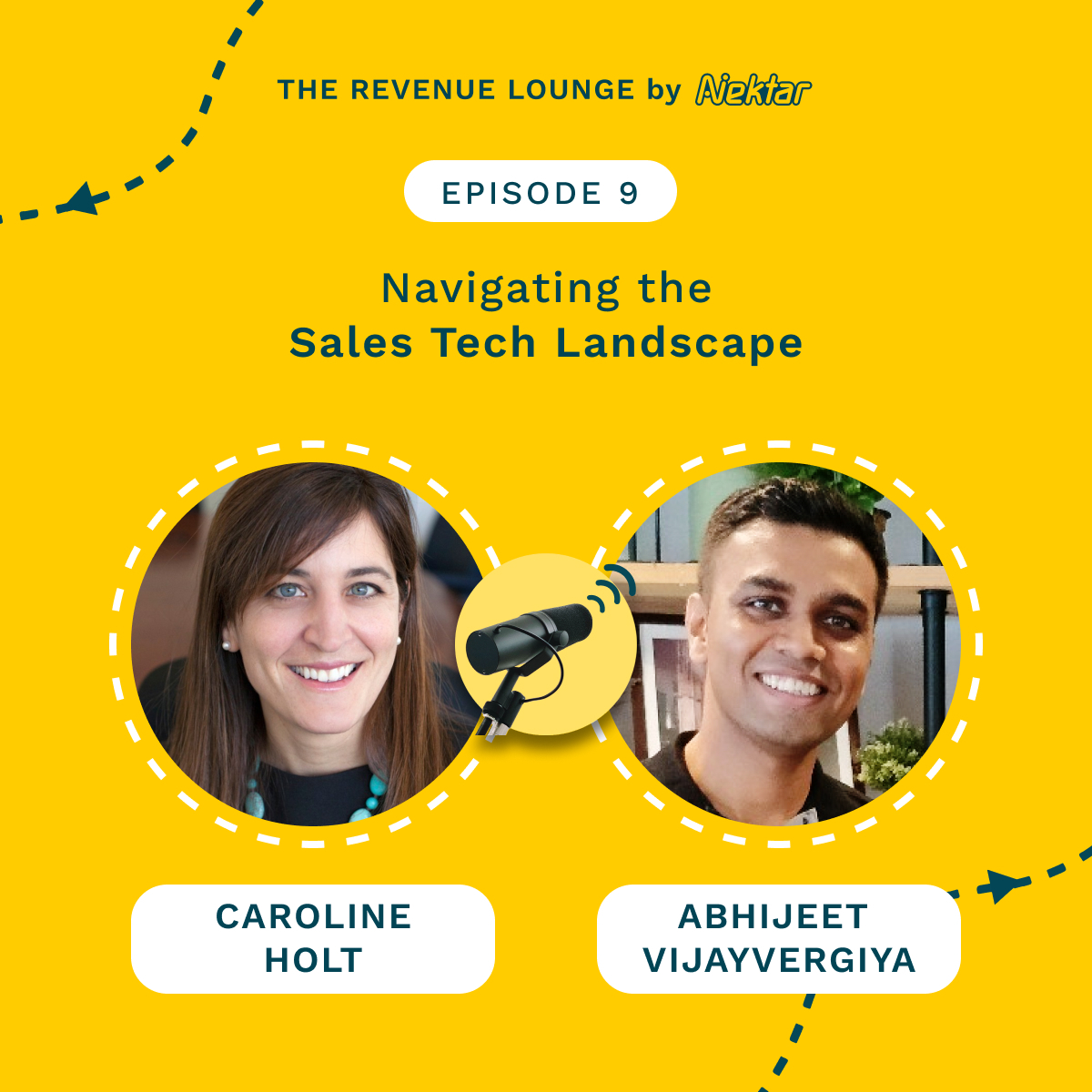
Ep #9: Navigating the Sales Tech Landscape
Listen Now